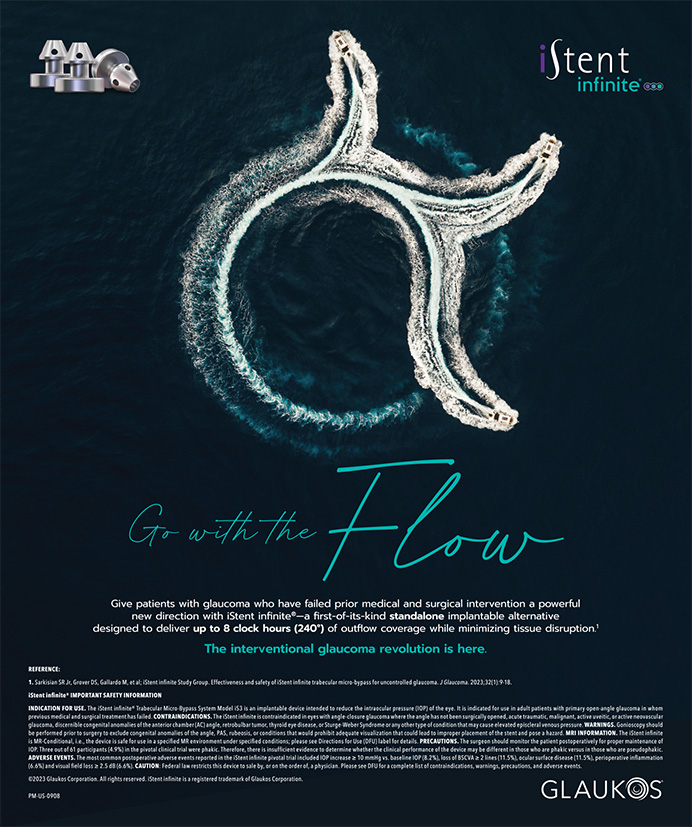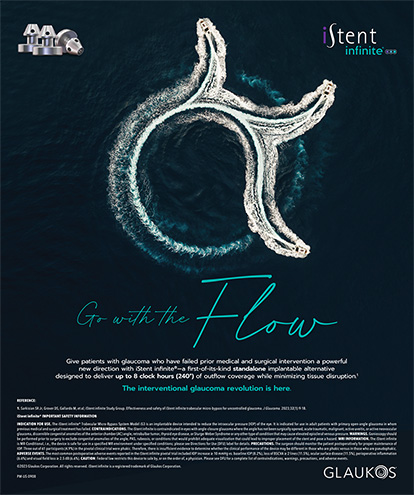How did your experience as a flight surgeon for the US Army influence your decision to become an ophthalmologist?
I noticed that Vietnam-era and younger, tech-savvy flight school graduates had very different abilities in terms of flying Apache helicopters at night. Although the older pilots had decades of aviation experience, their vision was not as good as that of their younger counterparts. In addition, the younger pilots were more adept at using the state-of-the-art, heads-up display, a system that projects information about the helicopter's speed, heading, and altitude on a transparent monocle that sits approximately 1 inch in front of the pilot's eye. What the younger pilots lacked, however, was experience flying combat missions.
I wondered if we could find a way to improve vision—not just in pilots, but in everyone who depends on good visual acuity to do his job—so it was commensurate with accumulated experience. I think we finally can achieve this goal, especially with customized ablation.
You were involved in a lawsuit stemming from a LASIK case in 1999. Why did you decide to go to trial instead of settling with the plaintiff?
It is important to remember that the decision to settle is not the doctor's alone. The patient/plaintiff must also agree to forego a trial. Surgeons who are facing a lawsuit tend to underestimate this aspect of the doctor/patient relationship. I would advise anyone who is being sued by a patient to step back and assess the situation—not from a medical perspective, but through the patient's eyes.
My only choice in this particular case was to enter the courtroom, because the plaintiff refused to settle. Fortunately, I won my case but not primarily because the jury was convinced by the scientific evidence that my legal team presented. A courtroom trial is like a show, because appearances can critically influence the jury's opinion. Whoever makes the best impression or tells the most believable story has a better chance of winning. You can imagine how frustrating this can be. A courtroom battle can consume as many as 5 years of your life. I cannot remember who said, "I was devastated twice in my life. The first time was when I lost a lawsuit. The second was when I won." These words summarize my experience with the legal system.
What technological advancements do you think had the greatest influence on refractive outcomes in laser vision correction?
For the past 6 years, I have been a clinical investigator for the Visx Star excimer laser system. I am impressed by the manufacturer's foresight, which allows surgeons to take advantage of additive technologies such as 3-D iris tracking, iris registration, and Visx CustomVue ablation profiles without completely replacing the existing hardware.
The most significant technological advance in refractive surgery, however, has been the IntraLase FS femtosecond laser. In addition to creating better, more predictable flaps that improve refractive outcomes, the Intralase is fun to use. My staff was probably more excited than I was when I replaced my bladed microkeratome with the IntraLase laser. I believe the femtosecond laser improved my lifestyle and will add years to my career.
How will technology change refractive surgery in the next 5 years?
Improvements in wavefront topography and pachymetry will streamline preoperative consultations and help us screen patients more accurately. We will also have platforms that combine femtosecond and excimer lasers into a single unit and allow us to measure parameters such as pachymetry in real time during refractive surgery.
Do you have any hobbies?
I am a lifelong tennis fan. I grew up playing the sport. My love for the game motivated me to establish the ColemanVision Tennis Championships, an annual event held in Albuquerque, New Mexico, that raises money for the New Mexico Youth Tennis Foundation. Last year, approximately 750 Hispanic children got a day off from school, held a racquet for the first time, hit balls with touring professionals, and ate pizza until they nearly exploded. In honor of the tournament's 10th anniversary, Governor Bill Richardson declared September 2007 "Tennis Month" and inaugurated the "Governor's Cup" competition at the middle school level. The whole experience is amazing, and I look forward to it every year.


